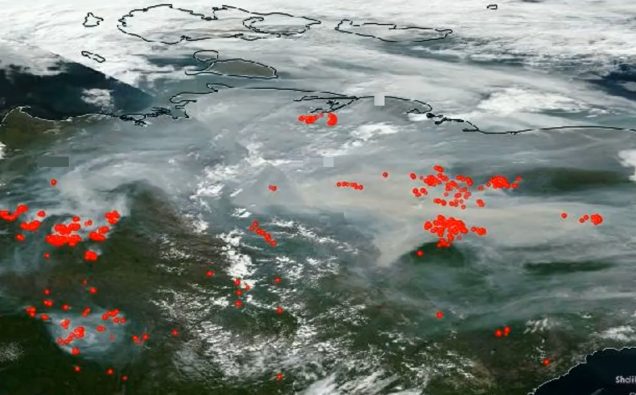
The Arctic is on fire and the once cool region has been warmer than Florida during parts of the past few months .
Yes you are reading it correctly. We are headed to an unknown future as climate change warns of inhospitable days ahead.
In Siberia, the region synonymous with everything cold, the temperatures have been more than 5C above average from January to June this year.
In June the mercury shot up 10C above average.
The almost unbelievable turn of the weather pattern, the temperature rocketed to over 30 degrees in some parts of the world’s deep-freezer.
It is for the second successive year that wildfires have set parts of the Arctic ablaze, according to the a World Meteorological Organization report.
The organization also warns of rapidly decreasing sea ice along the Russian polar coast.
“Some parts of Siberia this week have again topped 30 degrees Celsius – so it’s been warmer in Siberia than…many parts of Florida”, said WMO spokesperson Clare Nullis at a press conference in Geneva.
“Some parts of Siberia this week have again topped 30° Celsius – so it’s been warmer in Siberia than…many parts of Florida”, said @WMO spokesperson at today's press briefing.
Dramatic Arctic fires & sea ice melt, show need for urgent #ClimateAction : https://t.co/1GhLJZY4aG pic.twitter.com/Vh4mXX8f6r
— UN Geneva (@UNGeneva) July 24, 2020
“We’ve had exceptional and prolonged heat for months now and this has fuelled devastating Arctic fires; and at the same time we’re seeing rapidly decreasing sea coverage along the Arctic coast”, she continued, noting that their estimated total carbon emissions since January are the highest in 18 years, when the Copernicus Atmosphere Monitoring Service of wildfires began.
The development follows an astonishing reading of 38°C in the Russian town of Verkhoyansk on 20 June.
The cause of the prolonged furnace-like conditions, the world body says, is the “blocking” action of a vast weather front over the Arctic, along with a “persistent northward swing of the jet stream” which has been sending warm air into the region.
“The Arctic is heating more than twice as fast as the global average, impacting local populations and ecosystems and with global repercussions”, Ms. Nullis said.
She hit the nail saying such extreme heat would have been almost impossible without the influence of human-induced climate change.
The footage of the forest fires close to the ocean has alarmed climate change followers. But the question is if we are acting fast enough to stop further global warming to keep it at 1.5C above pre-industrial levels.
Even the COVID-19 pause that has scaled down industrial activity and reduced emissions of carbon gases in the air has not helped.
El Nino or no any other weather anomaly, we are stuck in a disaster mode. But do we know that well enough?
And what can we to save our souls? The global pledge in the form of 2015 Paris Climat Change Accord lies shattered to pieces.
What will be our fate in a few years?















